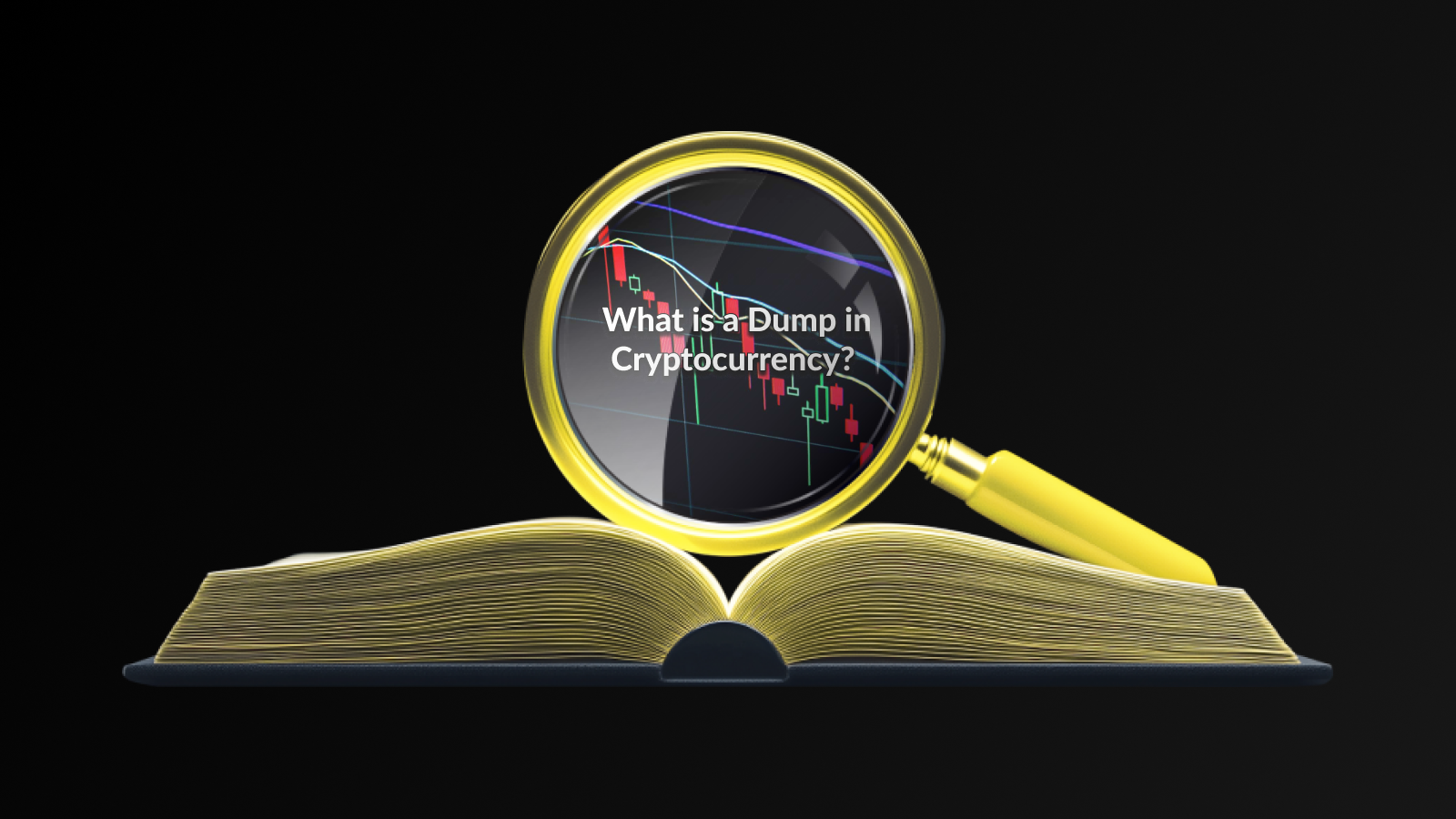Understanding The Concept of a Dump in Cryptocurrency
A dump in cryptocurrency refers to a significant and rapid decrease in the price of a cryptocurrency. This phenomenon can be triggered by various factors, including market sentiment, news events, or large holders (often referred to as ‘whales’) selling their assets in bulk. When a substantial number of investors panic sell, it can create a domino effect, leading to a broader market downturn.
Typically, a dump in cryptocurrency is characterized by high trading volumes alongside falling prices. This sudden volatility can often be alarming for investors, especially those who are new to the market, as they may not have the experience to navigate such fluctuations. Understanding the implications of a dump is crucial for managing investment strategies and maintaining financial stability.
In the world of digital currencies, a dump in cryptocurrency can occur due to a variety of reasons. Speculative trading and fear can lead to irrational selling decisions that contribute to a significant drop in prices. Awareness of these dynamics is essential for those looking to invest or trade effectively in the ever-evolving cryptocurrency landscape.
Monitoring market indicators and sentiment can help investors anticipate potential dumps and make informed decisions. Adopting a long-term investment strategy may also mitigate the emotional reactions that often accompany sudden price drops. Understanding the underlying principles behind a dump in cryptocurrency can aid in developing a more resilient approach to trading and investing in digital assets.
Understanding the dynamics that contribute to a dump in cryptocurrency is crucial for traders and investors. Several factors can trigger such events, including market speculation, regulatory news, and macroeconomic conditions. When large holders or whales decide to sell off significant portions of their holdings, it can lead to a rapid decline in prices, resulting in a massive sell-off pressure.
Another key cause of a dump in cryptocurrency involves negative sentiment and fear among investors. This fear can be amplified by social media trends or news reports, creating a panic-selling environment. When panic sets in, traders tend to sell their assets quickly to avoid further losses, which perpetuates the downward trend.
Moreover, technical factors such as breaches of critical support levels or negative trading signals can also lead to a dump in cryptocurrency. When these levels are hit, automated trading systems may trigger additional sell orders, further exacerbating the situation.
External influences like changes in regulation or financial institution policies can also lead to significant price drops. For example, if a major country announces a crackdown on cryptocurrency trading, it could spark widespread fear and distrust, causing investors to liquidate their positions and contributing to a dump in cryptocurrency.
How To Identify and Respond to a Cryptocurrency Dump
Identifying a dump in cryptocurrency involves monitoring market trends and recognizing abrupt price changes. Traders can use various analytical tools and methods to spot potential dumps early. Here are some key strategies:
1. Monitor Price Patterns: Regularly check the price charts for sudden drops or significant selloffs. A steep decline in price can be a strong indicator of a dump.
2. Use Volume Analysis: Volume spikes often accompany a dump. If you notice an increase in trading volume along with a falling price, this may signal that a dump is occurring.
3. Keep an Eye on Market Sentiment: social media, news sources, and community forums can provide insights into market sentiment. Negative news or rumors can trigger emotional selling, resulting in a dump.
4. Set Alerts: Use cryptocurrency tracking tools or exchanges that allow you to set alerts for price changes. Being notified about significant price movements can help you respond promptly.
5. Perform Regular Technical Analysis: Familiarize yourself with technical indicators such as moving averages or RSI (Relative Strength Index). These tools can help you identify overbought or oversold conditions that may precede a dump.
6. Diversify Your Portfolio: To mitigate risk, consider diversifying your cryptocurrency holdings. A well-diversified portfolio can help cushion the blow during a market dump.
When responding to a dump in cryptocurrency, it’s essential to remain calm and avoid impulsive decisions. Here are some strategies to consider:
1. Assess Your Position: Determine whether the dip is temporary or part of a larger trend. If you believe in the long-term potential of your investment, it may be wise to hold your position.
2. Buy the Dip: Some traders see a significant drop as a buying opportunity. Accumulating more coins at a lower price can yield profits if the market recovers.
3. Set Stop-Loss Orders: Implement stop-loss orders to minimize potential losses. This strategy automatically sells your holdings if the price falls below a certain level, protecting your investment.
4. Stay Informed: Keep up to date with market developments, news, and any factors influencing the cryptocurrency landscape. Staying informed can help you make better decisions regarding your investments.
By effectively identifying and responding to a dump in cryptocurrency, investors can protect their assets and potentially capitalize on market fluctuations.
Navigating through a dump in cryptocurrency can be challenging, but understanding key strategies can significantly improve your trading experience. Here are some essential takeaways to keep in mind:
- Stay Informed: Regularly monitor news and trends in the cryptocurrency market. Knowledge of market sentiment can help you anticipate potential dumps.
- Set Alerts: Use price alerts to be notified of drastic changes in your chosen cryptocurrencies. This allows you to take swift action when a dump occurs.
- Diversify Your Portfolio: Avoid putting all your investments in one cryptocurrency. A well-diversified portfolio can mitigate risks associated with sudden dumps.
- Use Technical Analysis: Familiarize yourself with chart patterns and indicators that may signal an impending dump. This can provide insights on when to buy or sell.
- Stay Calm: Emotional decision-making often leads to poor trading choices. In moments of panic during a dump, stick to your trading plan and strategies.
- Reassess Your Investments: After experiencing a dump, take the time to evaluate your investment strategies. Learning from past experiences can guide better decision-making for the future.
By implementing these strategies, you can better navigate the fluctuations of the cryptocurrency market and prepare for potential dumps in cryptocurrency.
Frequently Asked Questions
What does ‘dump’ mean in the context of cryptocurrency?
In cryptocurrency, a ‘dump’ refers to the sudden sell-off of a large quantity of a particular coin, leading to a significant drop in its price.
What causes a dump in cryptocurrency prices?
Dumps can be triggered by various factors, including negative news, market manipulation, panic selling, or significant holders liquidating their assets.
How can investors recognize a potential dump?
Investors may recognize a potential dump by monitoring unusual trading volumes, price volatility, social media sentiment, and news surrounding a particular cryptocurrency.
What is the difference between a ‘pump and dump’ scheme and a legitimate market sell-off?
A ‘pump and dump’ scheme involves artificially inflating the price of a cryptocurrency through misleading information to attract unsuspecting investors before the perpetrators sell their holdings, whereas a legitimate market sell-off is often driven by market conditions, news, or investor sentiment.
What should investors do during a dump?
During a dump, investors should assess the situation calmly, avoid panic selling, research the fundamental value of the asset, and consider long-term strategies rather than reacting impulsively.
Are all dumps harmful to the cryptocurrency market?
Not necessarily. While large dumps can drastically affect prices and investor confidence, they can also create buying opportunities for those who believe in the long-term potential of specific assets.
How can one protect themselves from being affected by a dump?
To protect against the effects of a dump, investors should diversify their portfolios, set stop-loss orders, stay informed about market trends, and conduct thorough research before investing.
Disclaimer
This article is for informational purposes only and does not constitute financial or investment advice. Cryptocurrency investments carry risks related to volatility, market manipulation, and regulatory changes. Always conduct your own research (DYOR) and consult with a licensed professional before making investment decisions. DarkEx assumes no responsibility for financial losses resulting from market fluctuations.
Click for more Darkex educational articles.





